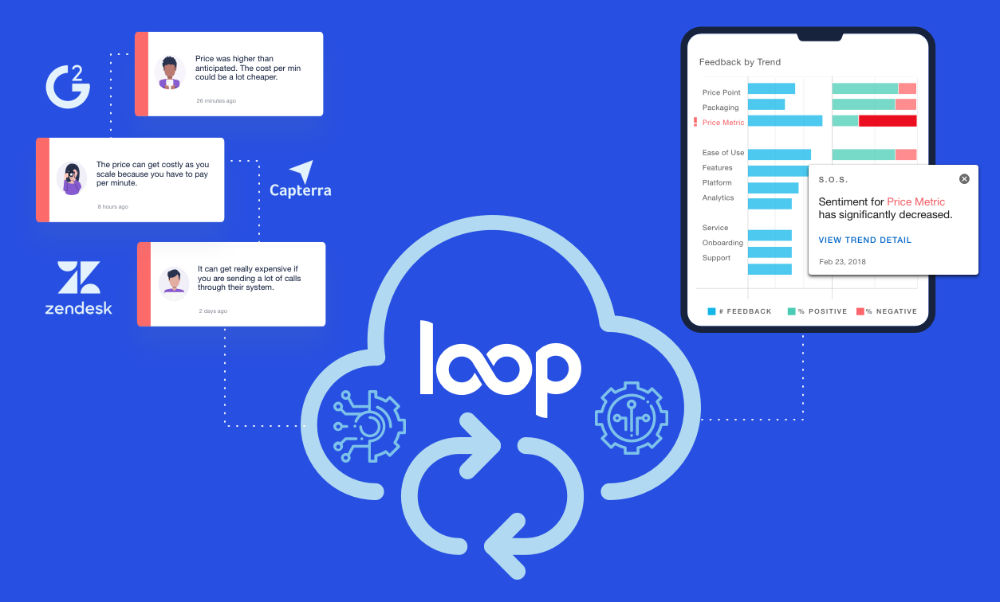Home » 4 Steps to Create a Voice of Customer Culture That Drives Loyalty and Revenue
4 Steps to Create a Voice of Customer Culture That Drives Loyalty and Revenue

Frank Barry
COO/CMO & Founding Team Member
Tithe.ly

“Voice of the Customer” has become a big focus for SaaS companies. Organizations are pouring resources into programs in an effort to prioritize customer wants and needs. As a founding team member and leader of a tech company, I know how important this work is.
If we want to build products and brands that customers love, prioritizing our customer’s voice has to be inherent to how we operate and a deeply rooted part of your company culture.
When we launched Tithe.ly, a FinTech SaaS built to serve churches nearly 5 years ago, staying connected to our customers was a no-brainer. Everyone who signed up on our website got a personal call where we’d help them get started with the product or answer questions they had as they were exploring solutions. These customer insights were priceless.
The personal touch meant a lot to our customers and gave us constant feedback that we could use to improve every part of our company. This type of customer focused approach is just how we did things, and how we will continue to do things. In a competitive space, the biggest differentiator between you and your competitors is how well you deliver on the promises you make to customers.
When I think about the rapid growth Tithe.ly has experienced, now serving over 13,000 customers in 50 countries, it’s clear that our “secret sauce” is a great customer experience. Our growth is a direct result of putting customers at the forefront of everything we do. And I don’t just mean paying attention to customer feedback or NPS. I mean prioritizing them from the very beginning by deeply understanding who they are, the challenges they face, the responsibilities they have, and their long-term goals. This level of customer focus drives how we build products, how we grow our team, and where we prioritize our resources.
Every company is different, but there are four core principles of building a Voice of the Customer culture that cannot be overlooked. If you want to build a company or launch a product your customers love, follow these steps to drive customer loyalty and grow revenue.
Be the customer
Great products solve problems.
Know who you’re building for before you decide what you’re building. It’s difficult to solve a problem you don’t understand for a customer you don’t know.
Tithe.ly started because we were the customer — When we set out to build a product, we were building a solution for ourselves.
This level of understanding of your customers’ pain points is important. Why? Because it makes for better products and solutions. Walk a mile in your customer’s shoes before you tell them that you know what’s best for them.
How to put this in practice:
Maybe you haven’t experienced the problems of your customers firsthand. That’s ok – there are still ways that you can gain this level of insight.
- Hire your customers: the best people to help you develop products and messaging for a niche market are those who have been a part of that market. Build your team with talented people that have first-hand experience of the problem you’re trying to solve – you’ll be better for it.
- Get customer feedback from the beginning: from concept to launch, get feedback from them on whether what you’re building will work for them. Don’t wait until the product is launched to ask whether or not something meets their needs.
- Take action by using your own product: If you’re not using your own product, it will be hard to convince other people to. This is the best way to understand breakdowns in the user experience and come up with ideas to make it better.
Pick up the phone
From day one, we’ve called every customer.
And as we’ve grown to over 13,000 customers, nothing has changed. We’re not just getting on the phone with customers to close a deal or upsell (though, this is often a benefit of doing so). We’re on the phone with every single customer so that we can build a relationship, hear about what they’re trying to achieve, and understand if there are gaps in our solution.
It’s the basics. If you want to gain trust, you have to build it. People trust people, not companies. In the early days, especially, people need to know who you are—they need to understand your vision just as you need to understand their’s.
Set the stage early on that you want to grow together, learn together, and that their feedback is invaluable. Our customer feedback matters because we started asking for it and acting on it early on. Listening to the voice of the customer has made our product better.
How to put this into practice:
- Schedule a meeting with every new customer: Whether you require a phone-number part of the sign-up process or your first email to them is an invitation for a call, make sure that getting on the phone with customers is the first priority of the nurture process.
- Speak regularly: Set up a frequency for check-ins—whether this is with CSMs, AMs, or the CEO does not matter. The important thing is to stay connected with them so that you can identify issues and opportunities early. This is vital for customer retention.
- Pay attention to user-behavior: Set-up triggers that alert you of specific user behavior that raises concern. Are customers not using the product or features as intended? Has usage declined? Have they not invited others within their organization to join their account? Identify signals that alert you of potential risk and then do proactive outreach to understand barriers.
Stay active in the market
Some of the biggest players in the game have launched products or campaigns that flopped. The root cause usually boils down to one thing: they were out of touch with their market. The bigger your company gets, the easier it is to lose touch with your customers and users.
Our ongoing success and product development is a direct result of our involvement in the space we serve. Many of our team members are active in their local church on a regular basis. They’re ushering, leading small groups, serving in children’s ministry, participating on church boards, and volunteering in their communities. We directly experience the ongoing need for innovation and product improvement in a very organic way because it’s who we are.
Our deep involvement in our space has built credibility and positions us to deliver messages, products, and solutions that are in-line with their customer journey.
How to put this into practice:
- Find out where your customers are congregating: Be there. Whether it is online or offline communities, have a presence. Don’t just listen for your own gain, be an active participant and offer value free of charge.
- Create communities: If there is not already a space for networking and growth, create one. Create a space for shared learning and be a facilitator across the network. Communities help improve overall customer experience.
- Listen: Just as you would pay attention to usage signals, listen to what is talked about in the market. What are the concerns, ideas, and major trends bubbling up in conversation? How should these topics influence your product, brand, or engagement strategies?
Develop a customer-led vision
Our vision is to help churches increase giving and engagement while streamlining operations so that they can grow by spending more time on ministry and less time on technology. We know exactly where we are today and where we want to be in order to continuously deliver on this vision.
Having a clear, customer focused vision helps us know exactly where we need to improve, where our products need to mature, and how we can innovate for our customers to give them the tools they need to reach their goals.
When you build your company based on understanding your customer from the very beginning, everything else naturally falls into place. As you set out to build Voice of the Customer programs at your company, keep in mind that no process or reporting metric will replace the value of being in touch with your customers.
How to put this customer program into practice:
- Ask customers about their short and long-term goals: Do you know what your customers are working towards? Is your product being built to help them meet these goals? Your roadmap should directly tie to customer value.
- Make customer goals a part of your goals: When you plan months and years out, do you have KPIs that are tied to your customers’ growth and success? If not, rethink that. If your customers are not growing with you, they won’t continue to stay with you.
- Give customers a seat on your board: Choose a representative (maybe an early adopter or a representative at an organization that has deep knowledge of and influence in the space) and invite them to be a part of your board. This will ensure that the decisions you make are made with customer input.
Demonstrate that you care. Have conversations. Stay active in the market. And keep your customer-led vision your north star. If you do this, the processes, programs, and strategies that you execute will be more impactful for your business and those you serve.



